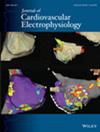The Atrial Fibrillation Registry (The FLOW-AF Registry): Insights From the United Arab Emirates—Patient Characteristics, Treatment, and One-Year Outcomes
Abstract
Background
The epidemiological landscape and treatment efficacy of atrial fibrillation (AF) in the Middle East, notably in the United Arab Emirates (UAE), remain under-explored, presenting a distinct demographic and clinical pattern compared to Western populations. The FLOW-AF Registry aimed to bridge this knowledge gap by examining the characteristics, treatment patterns, clinical outcomes, and healthcare resource utilization (HCRU) of newly diagnosed non-valvular atrial fibrillation (NVAF) patients in the UAE, contributing to the scant literature on NVAF management in the region.
Methods
This multicenter, prospective observational study enrolled patients diagnosed with NVAF across six sites in the UAE. Data were collected on demographics, medical history, treatment decisions, clinical outcomes, and HCRU over a 12-month observation period.
Results
A total of 198 patients were enrolled, with a mean age of 63.44 years. Mean CHA₂DS₂-VASc and HAS-BLED scores at baseline were 2.95 and 1.76, respectively. Most patients (55.77%) were prescribed non-vitamin K antagonist oral anticoagulants (NOACs). One-year incidence rates for major clinical events were 6.7% for all-cause mortality, 2.8% for bleeding complications, and 0.6% for myocardial infarction. No strokes were reported during the study period.
Conclusion
The FLOW-AF Registry provides valuable insights into NVAF management in the UAE, demonstrating a distinct patient profile and a preference for NOACs. The NVAF cohort in the UAE was characterized by a younger demographic with lower risk scores and lower rate of clinical events relative to global counterparts. The findings underscore the evolving approach to AF management in the UAE, suggestive of a shift towards NOAC use but also highlights the need for ongoing research to fully understand long-term outcomes and validate current treatment paradigms in the UAE.


 求助内容:
求助内容: 应助结果提醒方式:
应助结果提醒方式:


